Rising Star Indie Publisher Mirror Comics on their Weird Western Mission Arizona
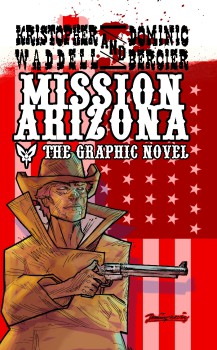 Mission Arizona, the graphic novel from indie publisher Mirror Comics, recently came out on ComiXology. I already had a paper copy and loved this take on the weird western (like the dark weird westerns Buried Eyes by Lavie Tidhar or A Feast for Dust by Gemma Files), but I knew less about making comics or the changes in the comic book industry with e-comics sites like ComiXology, so I decided to chat with Mirror. Dominic Bercier is the president and publisher (and artist of Mission Arizona), while Kristopher Waddell is the editor-in-chief and co-publisher (and the writer of Mission Arizona). Both live in Ottawa, Canada.
Mission Arizona, the graphic novel from indie publisher Mirror Comics, recently came out on ComiXology. I already had a paper copy and loved this take on the weird western (like the dark weird westerns Buried Eyes by Lavie Tidhar or A Feast for Dust by Gemma Files), but I knew less about making comics or the changes in the comic book industry with e-comics sites like ComiXology, so I decided to chat with Mirror. Dominic Bercier is the president and publisher (and artist of Mission Arizona), while Kristopher Waddell is the editor-in-chief and co-publisher (and the writer of Mission Arizona). Both live in Ottawa, Canada.
Mission Arizona is a dark weird western about an old west town that has an unpleasant crossing with the supernatural world. Its outlaw hero is destined, by fate and birth, to face this supernatural evil.
Derek: Where does Mission Arizona come from? It’s got a bit of a spaghetti western feel, overlaid with the destiny of facing off against a terrible evil, but begins with a travelling showman sequence. How did these different flavors make it into the mix?
Kris: My interest in writing in this genre came from my childhood experiences watching old Roy Rogers and Gene Autry westerns with my Dad. Horror has always interested me because I’m fascinated by the abject, and our culture’s obsession with fearing the other. It probably doesn’t help that I watched Nightmare on Elm Street, Jaws and Alien at a very young age.
In Mission, I really wanted to explore loss and redemption. Padre Martin Risk loses his wife and child, Samuel Risk loses his home and his family, while the town of Mission loses its soul. I wanted to write about the struggle and the consequences of dealing with loss, and the protagonist’s fight for redemption.

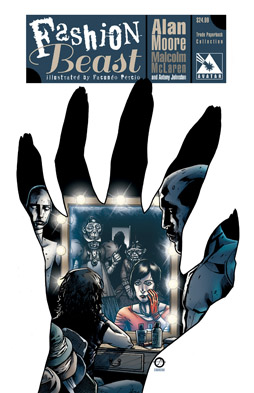 It seems like one of those creative pairings that could only happen in comics. Odd, then, that it was originally planned to be a film.
It seems like one of those creative pairings that could only happen in comics. Odd, then, that it was originally planned to be a film.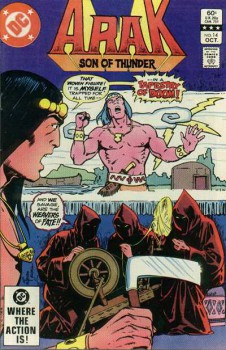
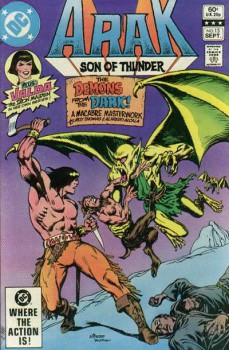
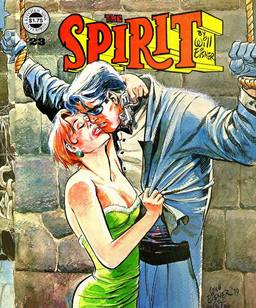
 A few months ago, the 2013 Hugo Award for Best Graphic Story was given to Saga, Volume 1, the first trade paperback collection of the ongoing Saga comic book. Written by Brian K. Vaughan, with art by Fiona Staples (and lettering and design by the Fonografiks studio), the book deserved the win. It’s the first chapter in a promising story and manages to establish a simple and powerful basic situation for the main characters, while also creating a complex world, backstory, and array of subplots. If it sometimes seems overbroad, too accessible and glib, it also has a deep and original sense of history to its setting, and a design sense that makes that setting live.
A few months ago, the 2013 Hugo Award for Best Graphic Story was given to Saga, Volume 1, the first trade paperback collection of the ongoing Saga comic book. Written by Brian K. Vaughan, with art by Fiona Staples (and lettering and design by the Fonografiks studio), the book deserved the win. It’s the first chapter in a promising story and manages to establish a simple and powerful basic situation for the main characters, while also creating a complex world, backstory, and array of subplots. If it sometimes seems overbroad, too accessible and glib, it also has a deep and original sense of history to its setting, and a design sense that makes that setting live.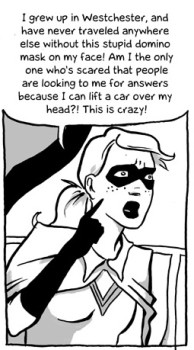
 The first stop I made on my shopping expedition last Boxing Day was at my local neighbourhood comics store, which happens to be conveniently located two and a half blocks from my house. There, I found a deal in the back-issue bins: issues 1 to 4 of Stalker, a DC fantasy comic from the 70s. I’d vaguely heard of the title, but knew nothing about it. I thought I remembered hearing that it had good art, which I imagined perhaps meant work by somebody like Nestor Redondo or Ernie Chan. I was way off. In fact, the art was by the remarkable team of Steve Ditko and Wally Wood. As a result, it’s wonderful. And more than that: it’s truly weird fantasy art in every sense.
The first stop I made on my shopping expedition last Boxing Day was at my local neighbourhood comics store, which happens to be conveniently located two and a half blocks from my house. There, I found a deal in the back-issue bins: issues 1 to 4 of Stalker, a DC fantasy comic from the 70s. I’d vaguely heard of the title, but knew nothing about it. I thought I remembered hearing that it had good art, which I imagined perhaps meant work by somebody like Nestor Redondo or Ernie Chan. I was way off. In fact, the art was by the remarkable team of Steve Ditko and Wally Wood. As a result, it’s wonderful. And more than that: it’s truly weird fantasy art in every sense.